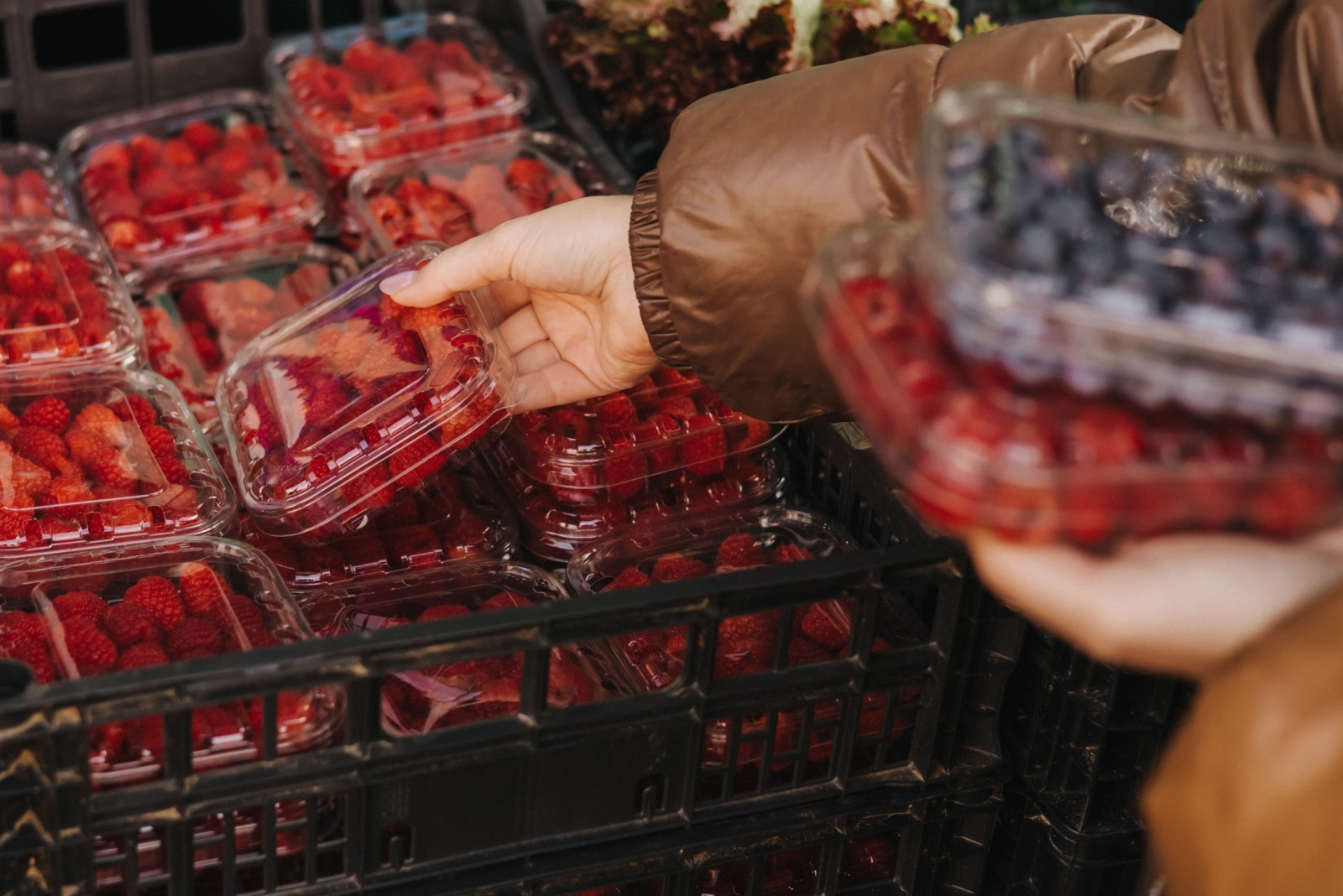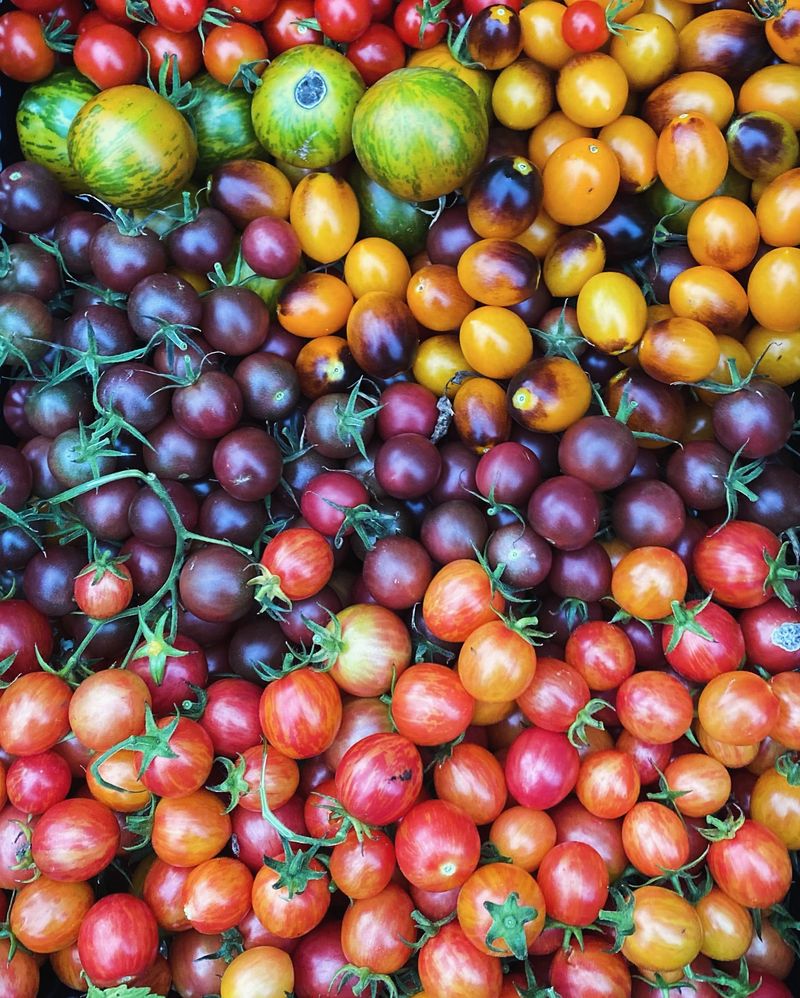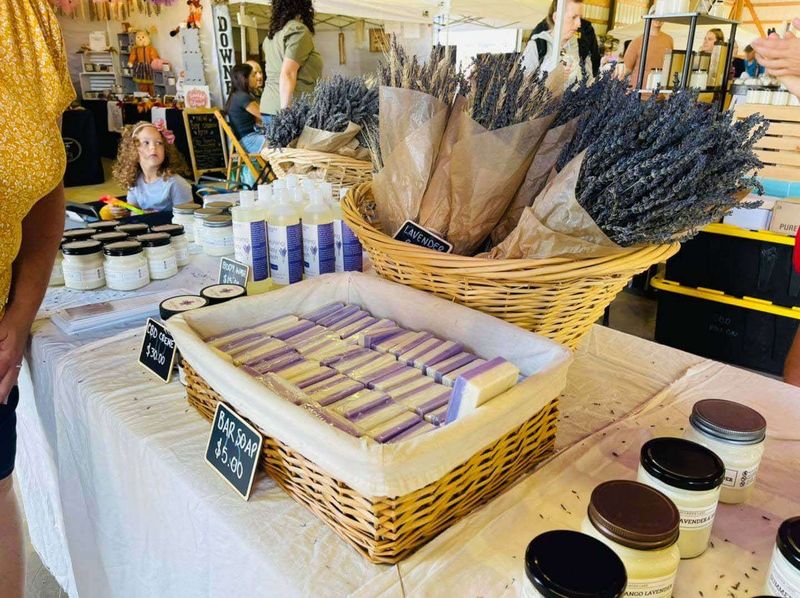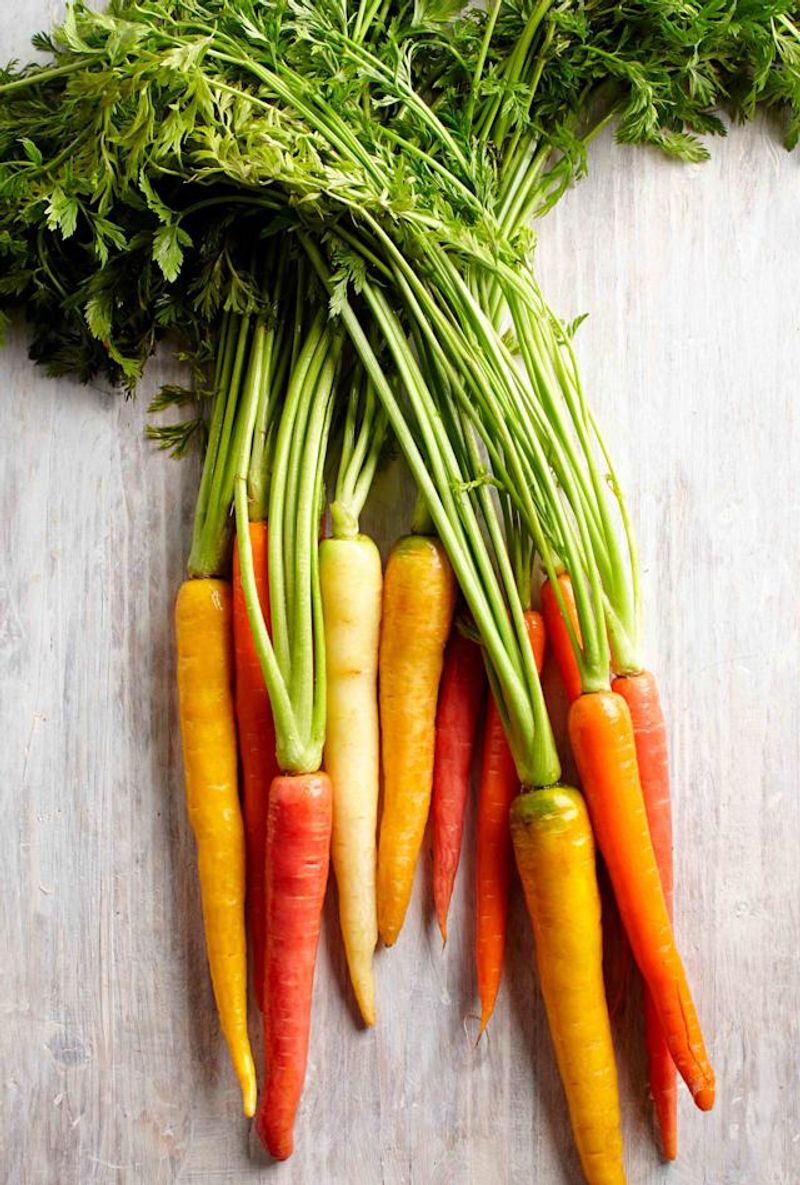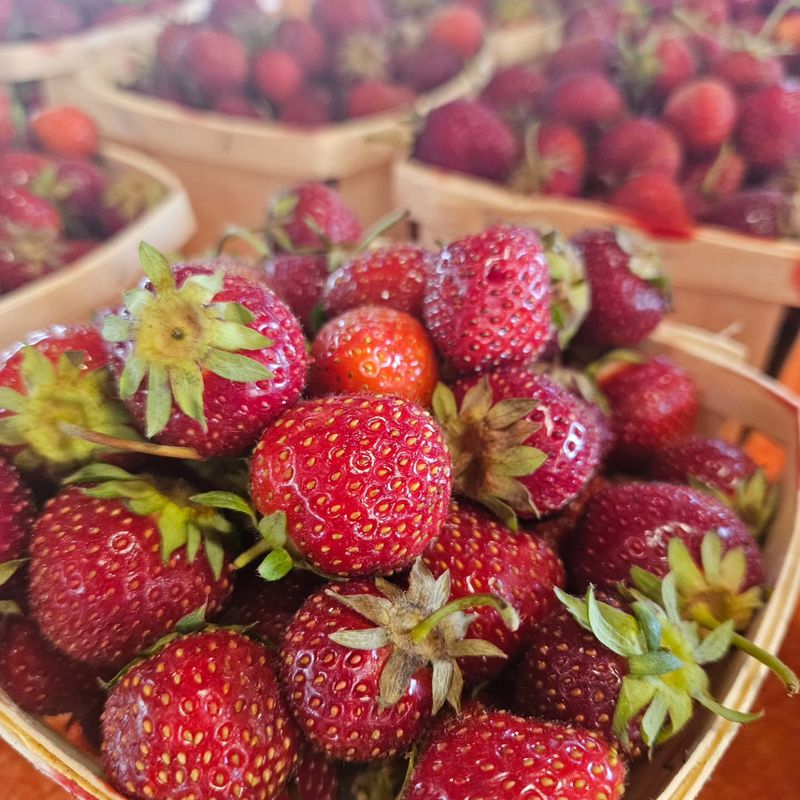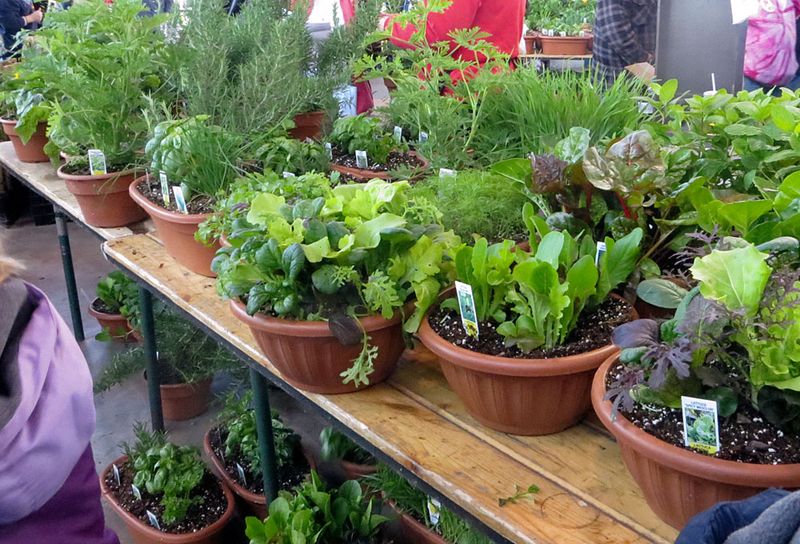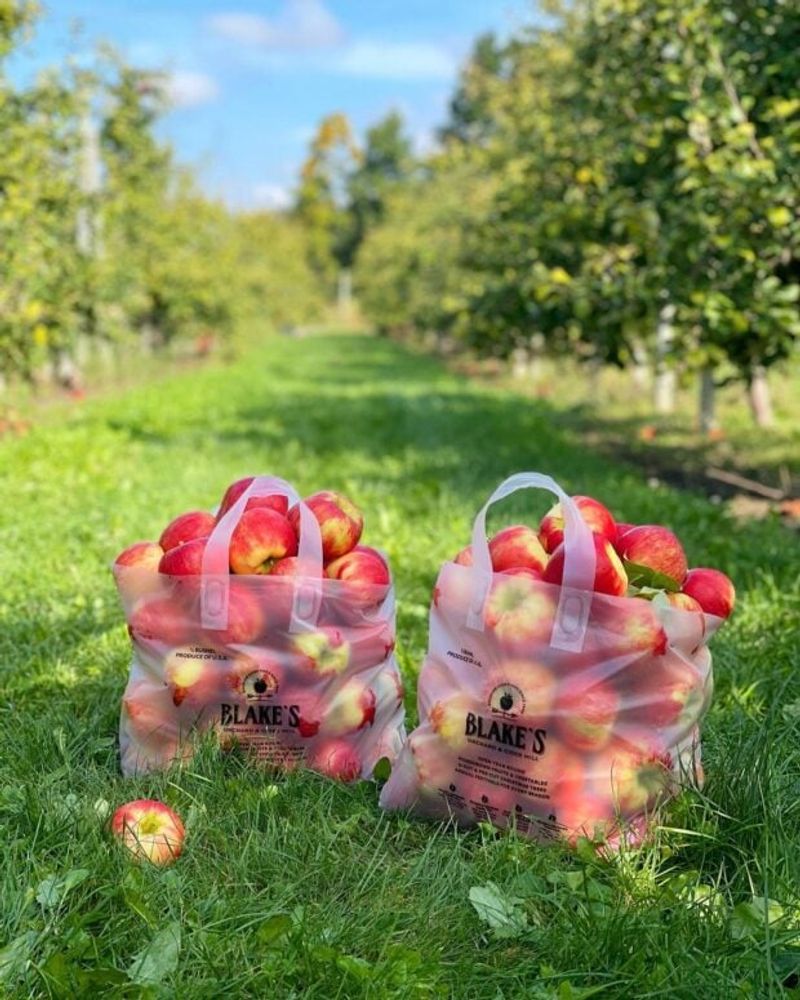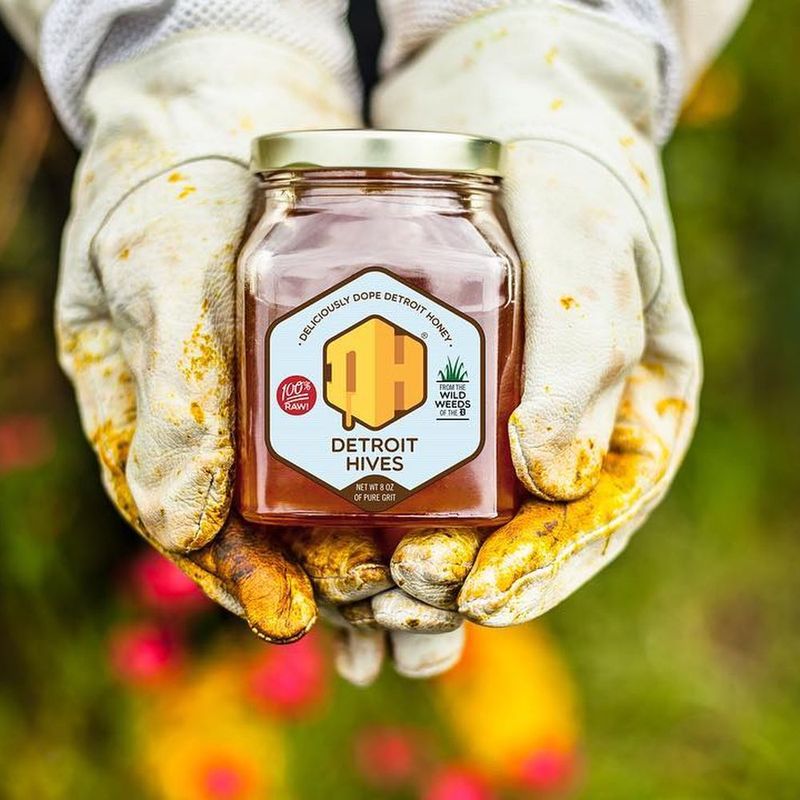Detroit’s Eastern Market stands as one of America’s oldest and largest public markets, serving the community since 1891. Every weekend, farmers, artisans, and food producers gather to offer the freshest seasonal items directly to shoppers.
Walking through the market’s historic sheds feels like stepping into Detroit’s living pantry. The market connects urban dwellers with rural producers in a celebration of Michigan’s agricultural diversity.
I’ve spent countless Saturday mornings wandering between stalls, discovering new varieties of familiar foods and meeting the people who grow them. Each visit reveals something unexpected – from heirloom vegetables to rare herb varieties.
1. Leafy Greens From Local Urban Farms
The market transforms on Saturdays with tables covered in just-harvested kale, spinach, and collards. These aren’t your standard supermarket varieties – they’re special cultivars grown in Detroit’s network of urban farms.
Many growers use organic methods passed down through generations. You’ll find farmers eager to explain the differences between their red Russian kale and lacinato varieties.
I always make this my first stop at Eastern Market, filling my bag with greens that were often harvested earlier that same morning. The freshness makes an unmistakable difference in both nutrition and flavor.
2. Heirloom Tomatoes Showcasing Midwest Soil
Summer brings an explosion of colors to Eastern Market’s tomato displays. Farmers proudly arrange Cherokee Purples, Green Zebras, and Yellow Brandywines in rainbow patterns that draw crowds of photographers and chefs alike.
The varieties change throughout the season, from early Sun Golds to late-season beefsteaks. Each farmer seems to have their specialty, with some stalls featuring over twenty different types.
What makes these tomatoes special isn’t just their unusual appearances but their complex flavors. Michigan’s rich soil gives these fruits a sweetness and depth you simply can’t find in commercially grown alternatives.
3. Aromatic Herbs Straight From Growers
Hidden among the larger produce stalls are herb specialists whose tables release waves of fragrance as you approach. Bundles of basil, mint, cilantro, and dill create a sensory experience unlike anywhere else in the city.
Several vendors specialize in less common varieties like lemon thyme, chocolate mint, and Thai basil. The growers often include handwritten recipe cards with purchases, sharing their favorite ways to use each herb.
My kitchen windowsill is perpetually lined with small pots from Eastern Market herb vendors. For around three dollars, you can take home a living plant that provides fresh herbs for months – much more economical than buying cut herbs at grocery stores.
4. Peppers Adding Heat And Color
Late summer brings Eastern Market’s most impressive pepper displays. Beyond standard bell peppers, you’ll discover Hungarian wax peppers, habaneros, and locally developed varieties unique to Michigan growers.
The pepper vendors are known for their enthusiasm and knowledge. They’ll happily guide you through heat levels and flavor profiles, often offering samples or cooking suggestions.
Last August, I discovered black Hungarian peppers from a third-generation farmer who explained how his grandfather brought the seeds from Europe decades ago. These family stories and agricultural heritage are part of what makes shopping at Eastern Market so meaningful.
5. Seasonal Root Vegetables At Market Stalls
Fall transforms Eastern Market with mountains of root vegetables in every imaginable variety. Beyond common carrots and potatoes, you’ll find purple-fleshed sweet potatoes, watermelon radishes, and heirloom turnip varieties.
Many farmers display their vegetables with the greens still attached, a sign of freshness you rarely see in grocery stores. The earth still clinging to some roots connects shoppers directly to the fields where they grew.
Shopping for root vegetables at Eastern Market introduced me to cooking with rutabagas and parsnips, now winter staples in my kitchen. The farmers’ suggestions for roasting combinations have transformed my cold-weather cooking.
6. Freshly Picked Berries In Small Batches
Michigan’s berry season brings specialized vendors to Eastern Market with carefully packed strawberries, blueberries, and raspberries. These aren’t the firm, travel-ready varieties found in supermarkets but delicate, fully-ripened fruits meant to be enjoyed quickly.
The difference in flavor is remarkable – these berries develop their full sweetness because farmers can pick them at peak ripeness rather than harvesting early for shipping. Many vendors offer samples that convince even the most hesitant shoppers.
Berry availability changes weekly throughout summer, making each market visit a different experience. Early June brings strawberries, July features raspberries and blackberries, while August highlights blueberries from Michigan’s famous growing regions.
7. Spices Connecting Global And Local Tastes
Eastern Market houses several spice merchants whose collections bridge Detroit’s diverse culinary traditions. Glass jars display everything from locally grown dried herbs to imported spice blends reflecting the city’s Middle Eastern, Mexican, and Mediterranean communities.
The spice vendors often create Detroit-specific blends you won’t find elsewhere. One popular merchant offers a ‘Detroit Barbecue Rub’ incorporating Michigan-grown herbs with traditional spices.
Speaking with these merchants reveals fascinating stories about how global spice routes connect to local cooking. Many can trace ingredient sources directly to specific farms or regions, providing a level of transparency rarely found in commercial spices.
8. Potted Garden Plants For Home Growing
Spring transforms sections of Eastern Market into an urban nursery filled with seedlings and starter plants. Local growers offer everything from heirloom tomato plants to rare pepper varieties, all adapted to thrive in Michigan’s climate.
The plant vendors provide invaluable growing advice specific to Detroit’s urban environments. They understand local soil conditions, microclimates, and challenges unique to city gardening.
My backyard garden began with Eastern Market seedlings five years ago. The vendors’ guidance helped me transform a small city lot into a productive space that now supplies much of my summer produce – creating a full-circle relationship with the market.
9. Orchard Fruits Showcasing Michigan’s Bounty
Michigan’s reputation as a premier fruit-growing state shines at Eastern Market through displays of apples, peaches, and cherries from the state’s renowned orchards. Many growers make the pre-dawn drive from western Michigan to share varieties rarely found in stores.
The apple selection alone is worth the visit, with heritage varieties like Northern Spy and Winesap appearing alongside newer Michigan-developed cultivars. Orchard owners often provide samples, helping shoppers discover new favorites.
Fall brings a particularly impressive array of stone fruits and apples. Last October, I discovered Crimson Crisp apples from a third-generation orchard – they’ve become my go-to baking apple after the farmer explained their perfect balance of sweetness and structure.
10. Honey, Seeds, And Plant-Based Market Goods
Beyond fresh produce, Eastern Market features specialty vendors offering honey from local apiaries, Michigan-grown seeds, and plant-based products. The honey sellers often arrange their jars by season or flower source, showing how flavor profiles change throughout the year.
Seed vendors provide an important service for gardeners seeking varieties specifically adapted to Detroit’s growing conditions. Many focus on preserving heirloom varieties with historical significance to the region.
The market’s plant-based section has expanded recently, with vendors selling everything from locally made tofu to mushrooms grown in repurposed Detroit buildings. These entrepreneurs represent the market’s evolution while maintaining its agricultural roots.

